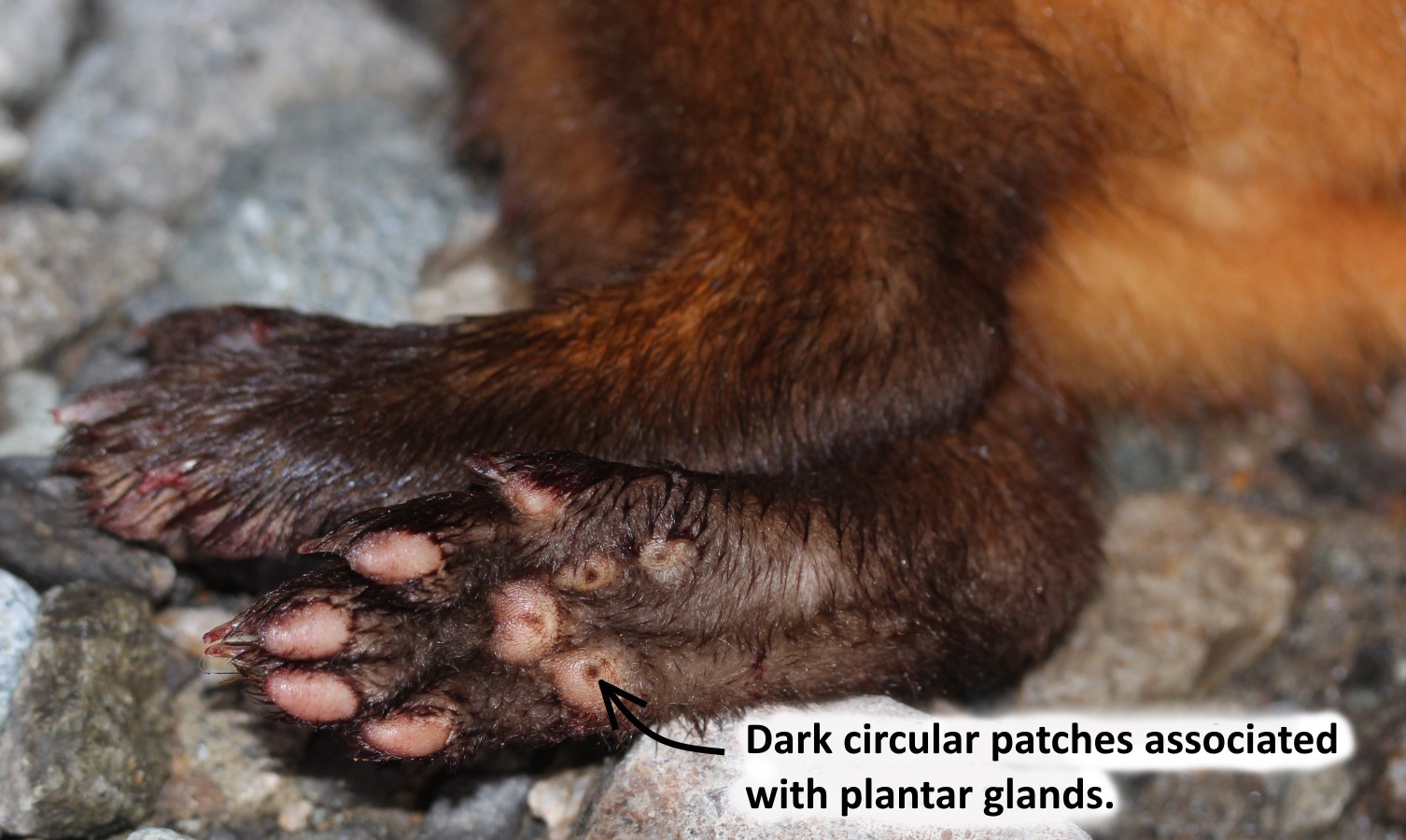Hind paws of a Japanese marten (Martes melampus)

The Japanese marten, North American marten, Eurasian pine marten, beech marten, and sable have plantar glands on their hind paws that emit a distinctive odour. They appear as 4 small dark circular patches on the large segmented centre pad (known as the metacarpal pad). In gross appearance they vary within and between species. They may appear wart-like, resemble small inflorescences, or consist of small indentations in the skin.(1)(2) For some species like the North American marten, the overall structure of these glands changes with the seasons.(1)
It is hypothesised that plantar glands serve as chemical transmitters. Scent deposition from other glands is correlated with discrete behaviours (e.g., abdominal rubbing, urination). However, there have been no behavioural associations identified with the release of chemicals from plantar glands. This could be due to the fact that transmission from the plantar glands can occur passively through regular movement without the need for specific transmission behaviours.(2)
The fisher also has visible patches on their hind paws that are associated with plantar glands.
References
